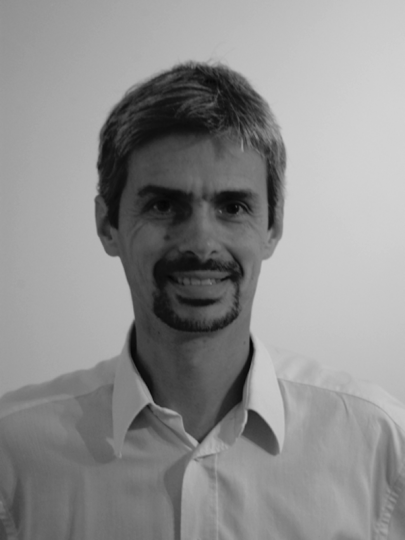Pierre-François LenneInstitut de biologie du développement de Marseille (IBDM) - CNRS / Aix-Marseille Université
Mes recherches
Mes travaux portent sur le développement et la mise en œuvre de nouvelles approches pour l’étude de la dynamique et la mécanique cellulaire lors de la morphogenèse des tissus. Physicien de formation, j’ai été recruté au CNRS en 2001 à l’Institut Fresnel à Marseille, après un postdoctorat au Laboratoire Européen de Biologie Moléculaire (EMBL) à Heidelberg en Allemagne. Tout d’abord chargé de recherche CNRS dans une équipe de biophotonique où j’ai mis au point des méthodes pour l’observation de molécules fluorescentes individuelles, j’ai rejoint l’Institut de Biologie du Développement de Marseille en 2009. J’y ai créé une équipe ATIP-Avenir, constituée de physiciens et de biologistes, cherchant à comprendre les principes physiques qui sous-tendent la morphogenèse des animaux, en particulier comment les forces mécaniques sculptent les formes cellulaires et tissulaires. J’utilise aujourd’hui une combinaison de méthodes physiques originales et quantitatives, et d’outils génétiques et moléculaires pour aborder cette question.
Mon projet ATIP-Avenir
The morphogenesis of developing embryos and organs relies on cells’ abilities to change shape and to remodel their contacts with other cells. It is therefore key to understand how cell-generated forces produce cell shape changes, and how such forces transmit through a group of adhesive cells in vivo. In this context, we have explored (i) the mechanics and (ii) the supramolecular organization of E-cadherin in the early Drosophila embryo. (i) We have developed an approach using laser manipulation to impose local forces on cell contacts. Quantification of local and global shape changes using our approach can provide both direct measurements of the forces acting at cell contacts, and delineate the time-dependent visco-elastic properties of the tissue. (ii) We used 3D super-resolution quantitative microscopy to characterize the distribution of E-cadherin at adherens junctions. We found out that E-cadherin organizes in clusters, whose distribution can be accounted by a general theoretical framework including cluster fusion and fission events and recycling of E-cadherin. This approach allowed us to identify two distinct active mechanisms setting the cluster size distribution, namely dynamin-dependent endocytosis and actin dynamics. Altogether our results provide a foundation for a quantitative understanding of how mechanical forces are distributed and transmitted in vivo.
